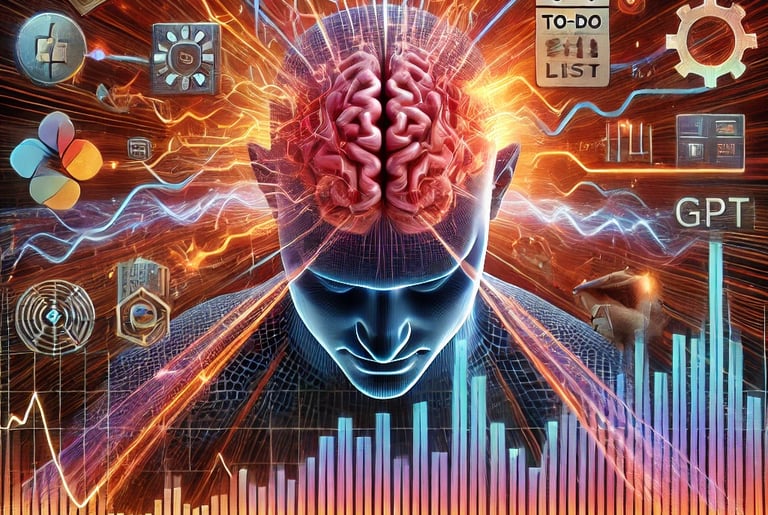Mastering Context Switching: Tools to Reclaim Your Focus
Context switching can drain productivity and increase cognitive fatigue, but simple tools like a notebook, to-do list, calendar, the Eisenhower decision matrix, and custom GPTs can help you stay focused and organized. Learn how to minimize distractions and optimize task management for better efficiency and peace of mind.
Kris Kahn and The Alchemy Node AI
9/18/20243 min read


In today’s fast-paced world, context switching has become a common challenge for many of us. It refers to the mental shift required to toggle between multiple tasks, much like a computer struggling to manage numerous open applications and large files. This constant switching not only distracts us but also drains our mental energy, leading to procrastination and a reduced ability to focus. Recognizing the cost of these frequent interruptions is key to regaining productivity.
The Cognitive Cost of Juggling Tasks
Research shows that when we engage in context switching, our brains experience processing delays similar to a computer running too many processes or becoming saturated with network service connections (think of a low-powered web server that just had it's site go viral (not as in infected)). Just as a machine lags under the weight of a high load trying to keep up with demands, our cognitive efficiency drops when we juggle too many tasks. This mental overload can result in cognitive fatigue, making it harder to complete tasks with accuracy and speed. Often, we cope by procrastinating or getting distracted, trapping ourselves in a cycle of inefficiency. The effects of long-term context switching stress has its own set of mental and physical health risks as well. Breaking this cycle requires a better approach to task management.
Simple Tools to Reduce Cognitive Load
A highly effective way to combat context switching is by using simple, time-tested tools that offload tasks from your brain, letting you focus more fully on the work at hand. These tools act as cognitive extensions, helping to organize and prioritize your thoughts and tasks. They also serve as resources in your circle of trust that you can delegate to.
Notebook: A notebook is a great place to offload mental clutter, jotting down ideas, random thoughts, or tasks as they arise. By capturing these on paper, you free your mind to concentrate on the immediate task without worrying about forgetting something later.
To-Do List: A structured to-do list breaks your workload into manageable steps, making it easier to focus on one task at a time. It’s a visual reminder of your priorities and progress, helping to reduce the mental strain of tracking everything in your head.
Calendar: Scheduling tasks on a calendar ensures that everything has its place in time, reducing the temptation to jump between activities. Blocking off time for deep work, meetings, or even breaks helps you stay grounded in the present task, allowing for focused and intentional work sessions.
Eisenhower Decision Matrix: When prioritizing tasks, the Eisenhower matrix is a powerful tool to differentiate between what’s urgent and what’s important. It helps you organize tasks into four categories: urgent/important, important/not urgent, urgent/not important, and neither. This approach prevents you from getting caught in a reactive mode, constantly firefighting, and instead allows you to focus on tasks that truly matter in the long run.
Custom GPTs: For repetitive tasks like summarizing reports, drafting emails, or generating updates, GPTs can be programmed to handle these activities efficiently. Automating routine assignments frees up mental bandwidth for more complex tasks, ensuring consistency and reducing the need for constant context switching. (I use one to help me with my blog generation for instance, but I always fine-tune the content.)
Enhancing Productivity with Effective Task Management
By combining these simple tools, you can create a solid framework to reduce the cognitive cost of context switching. Instead of forcing your brain to keep juggling, you delegate responsibilities to your external systems—your notebook, to-do list, calendar, decision matrix, and GPTs. These tools allow you to streamline your tasks, better organize your time, and reduce mental strain, creating an environment conducive to deep focus.
Ultimately, productivity is not about doing more but about doing the right things at the right time. By recognizing the impact of context switching and using the right tools to manage your tasks, you’ll find greater clarity, efficiency, and balance in both your professional and personal life.

